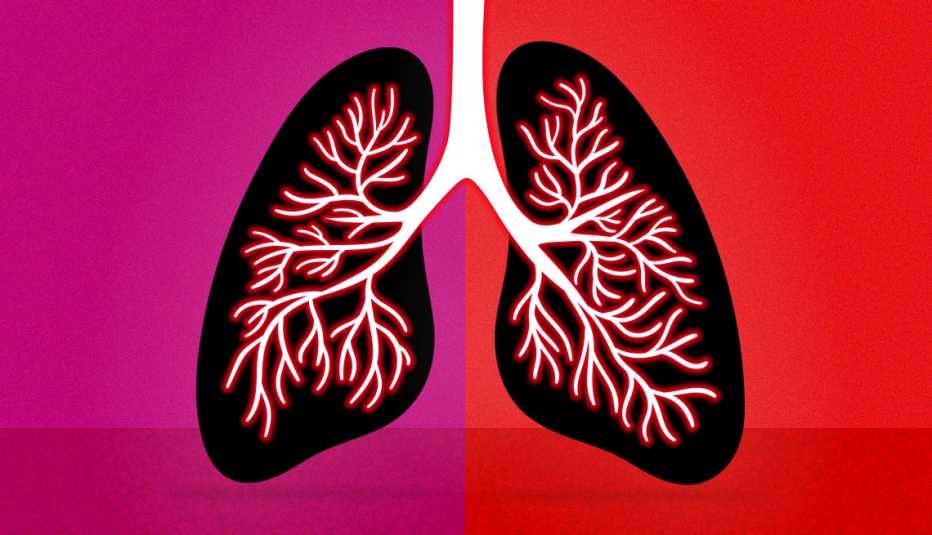Staying Fit


If it seems like everybody has a cough these days, you’re not wrong. Respiratory illnesses that can cause you to whoop and hack — your colds, flu, COVID, respiratory syncytial virus (RSV) and more — are running rampant in the U.S.
Activity spiked just before the holidays and remains high, according to the Centers for Disease Control and Prevention (CDC), especially among a cluster of states in the South and West. If you’ve had a cough that you just can’t shake, you may be wondering if it’s bronchitis or even pneumonia. Both share some similar symptoms, but they can require different treatments.


AARP Membership— $12 for your first year when you sign up for Automatic Renewal
Get instant access to members-only products and hundreds of discounts, a free second membership, and a subscription to AARP the Magazine.
Here’s how to tell if you have bronchitis vs. pneumonia, plus the questions you should — and shouldn’t — be asking your doctor.
What is bronchitis?
Bronchitis — or what’s officially called acute bronchitis — often starts out as a cold or flu-like illness. You might experience congestion or feel run-down and achy, says Neil Kalsi, M.D., an assistant professor in the University of Nebraska Medical Center Department of Family Medicine.
But with bronchitis, the infection — which is almost always caused by a virus — evolves and the airways leading to the lungs get inflamed and filled with mucus. The result is a nagging cough that can persist for several weeks.
“It’s that cough that doesn’t go away. It’s the cough that comes up when you’re trying to laugh or talk to someone on the phone,” says Kalsi, who adds that the cough can either be dry or come with some mucus and possibly even wheezing. “But it’s a really, really annoying cough that makes it hard for people to go to work because they just can’t talk to people.”
Other symptoms of bronchitis can include:
- Soreness in the chest
- Fatigue
- Body aches
- Sore throat
How is it treated?
Because bronchitis is usually caused by a virus — typically the same viruses that cause colds and the flu — antibiotics rarely help and, in fact, could cause more health issues. Instead, the common prescription for recovery is plenty of rest, fluids — and even some honey.
Multiple clinical trials have found that honey can help to improve the symptoms of a cough and does a better job than over-the-counter cough medicines. A summary of the research was published in 2020 in the journal BMJ Evidence-Based Medicine. “If you’re going to spend the 10 bucks on a cough medicine, might as well buy some local honey instead,” Kalsi says.




































































More From AARP
JN.1 and New Variants Sweep U.S.
Experts share advice on how to protect yourself5 Million More Adults Should be Getting Screened for Lung Cancer
New recommendations say it doesn’t matter how long ago you quitDo You Still Need Your Vaccine Card?
The CDC says it has stopped printing the paper cardsRecommended for You